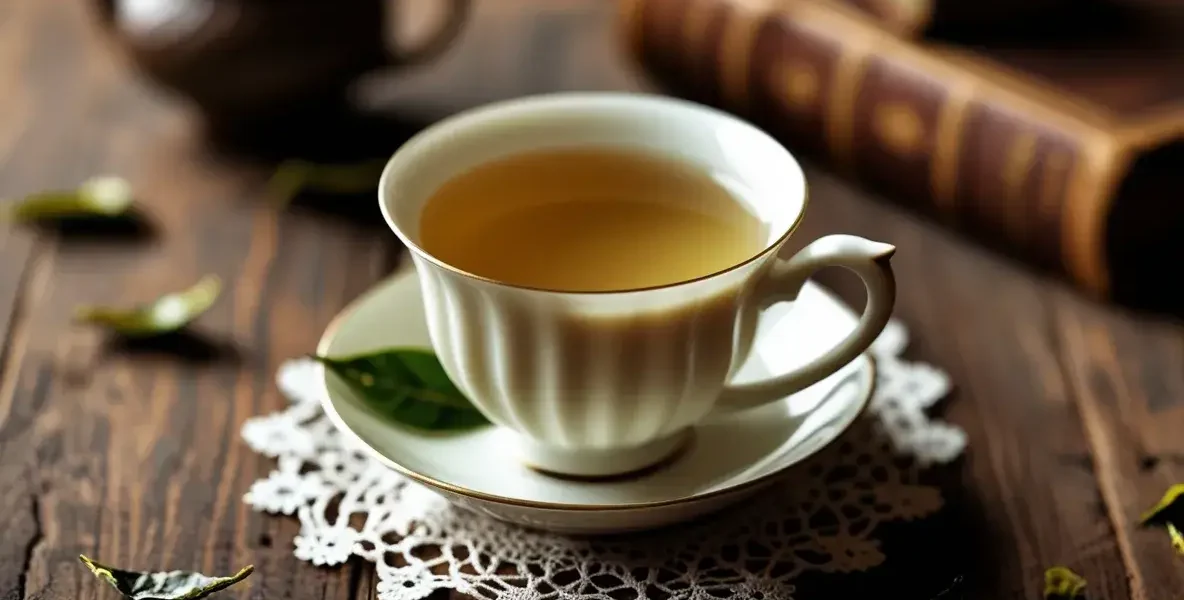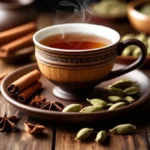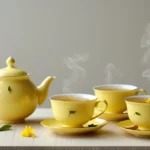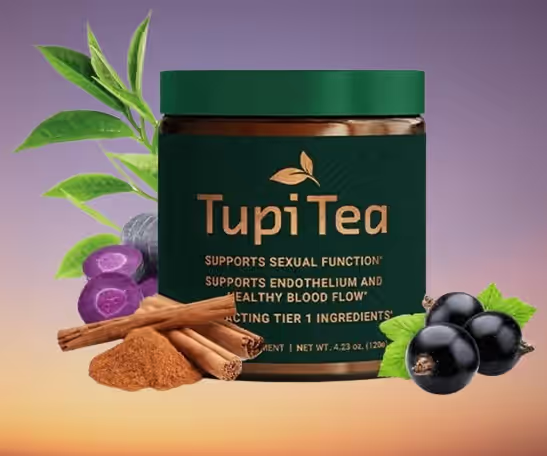Table of Contents
So, you’ve got your Darjeeling tea, and you’re thinking about adding a splash of milk. Maybe you’re wondering if that’s even allowed, or if it’ll mess up the whole vibe. Well, you’re not alone! A lot of people wonder about how to best enjoy their Darjeeling, especially when it comes to things like milk and sugar. This article is all about making your Darjeeling tea with milk taste amazing, without losing that special something that makes Darjeeling, well, Darjeeling. We’ll cover everything from how to make it right to what snacks go best with it.
Key Takeaways
- Adding milk to Darjeeling tea isn’t always typical, but it can work if done carefully.
- Choosing the right water and brewing method is super important for good Darjeeling tea.
- Different types of Darjeeling tea (called “flushes”) have unique tastes that pair differently with milk.
- Darjeeling tea has some cool health benefits, and it’s good to know about them.
- Picking a good quality Darjeeling tea is key to a great cup, especially if you’re adding milk.
Understanding Darjeeling Tea With Milk
Is It Common To Add Milk To Darjeeling Tea?
So, milk in Darjeeling tea, is it a thing? Well, not really. Purists might cringe at the thought, but hey, it’s your cup! Traditionally, adding milk isn’t common, especially among those who really appreciate the tea’s delicate flavors. Darjeeling is often called the “champagne of teas” for a reason; it has a complex profile that some believe is best enjoyed without any additions. But who are we to judge if you like a creamy Darjeeling tea?
How Does Sugar Affect The Taste Of Darjeeling Tea?
Okay, sugar. It makes things sweet, obviously. But with Darjeeling, it’s a bit of a balancing act. Adding sugar can mask the tea’s natural sweetness and floral notes. It might make it more palatable if you’re not used to the tea’s inherent flavors, but you risk losing the sophisticated profile. If you’re feeling adventurous, maybe try a tiny bit of honey instead. It might complement the tea better than sugar does.
What Are The Traditional Ways Of Serving Darjeeling Tea?
Traditionally, Darjeeling tea is served plain. No milk, no sugar. The focus is on experiencing the tea’s natural flavors. It’s usually brewed at around 185°F (85°C) for 3-4 minutes using filtered water. This helps maintain the integrity of the tea’s delicate flavors. Think of it as letting the tea speak for itself. If you are looking for Darjeeling tea recipes with milk or a darjeeling tea latte guide, you might be going against tradition.
Some say adding milk or sugar to Darjeeling is like putting ketchup on a fine steak. It overpowers the subtle flavors and detracts from the overall experience. But ultimately, it comes down to personal preference. If you enjoy it that way, go for it!
Preparing Darjeeling Tea With Milk
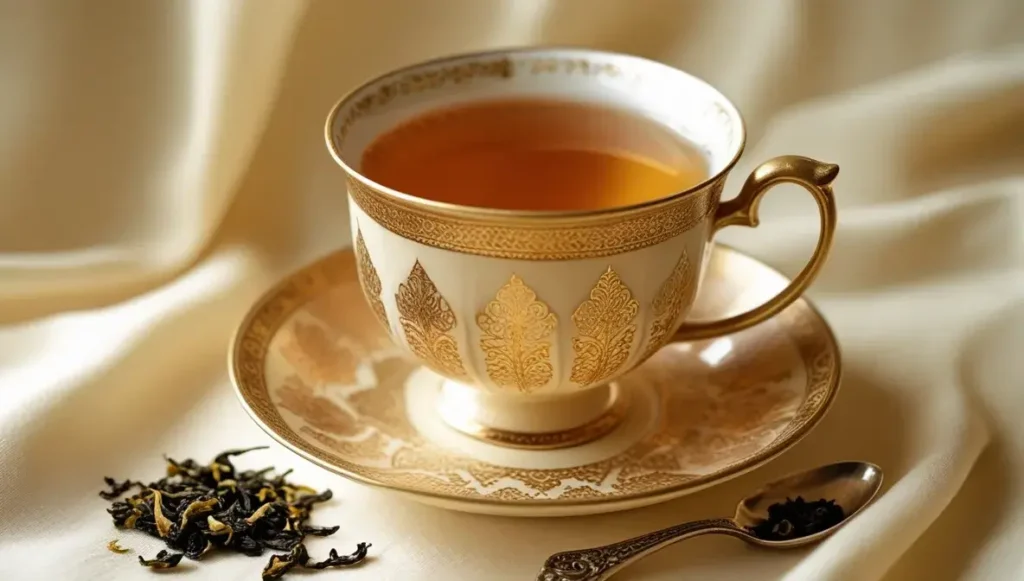
How To Make Darjeeling Tea
Okay, so you want to make Darjeeling milk tea recipes? It’s not as simple as just throwing a tea bag in a mug. The key is to respect the tea’s delicate nature. First, don’t use soap to clean your pot or cup; just wipe it with a damp cloth. You want to avoid any residue that could mess with the flavor. Use cold, filtered water or bottled spring water. Never use distilled water, it will dull the taste. Heat the water to around 205°F (just below boiling). Let it sit for a moment before steeping your tea. This helps to bring out the best flavor without burning the leaves.
Should A Tea Infuser Be Used With Darjeeling Tea?
Some people are really against using tea infusers with Darjeeling. They think it doesn’t give the leaves enough room to expand properly. Their view is that the only way to make Darjeeling tea is to steep loose tea leaves in a pot. But honestly, it’s up to you. If you’re using a good quality infuser that allows the leaves some space, it should be fine. Just make sure it’s clean! Experiment and see what works best for your taste. I’ve had good cups both ways.
Choosing The Right Water For Darjeeling Tea
Water is super important for darjeeling tea preparation. You can’t just use any old tap water. The best water is filtered or bottled spring water. Avoid distilled water at all costs; it’ll make your tea taste flat. The water should also be cold before you heat it up. This helps to extract the best flavors from the tea leaves. Think of it like this: good water in, good tea out. It really makes a difference in the final cup of creamy Darjeeling tea preparation.
👉 Get Your Top-Rated Darjeeling Tea Blend Delivered Fast Today 👈
Enhancing Darjeeling Tea With Milk
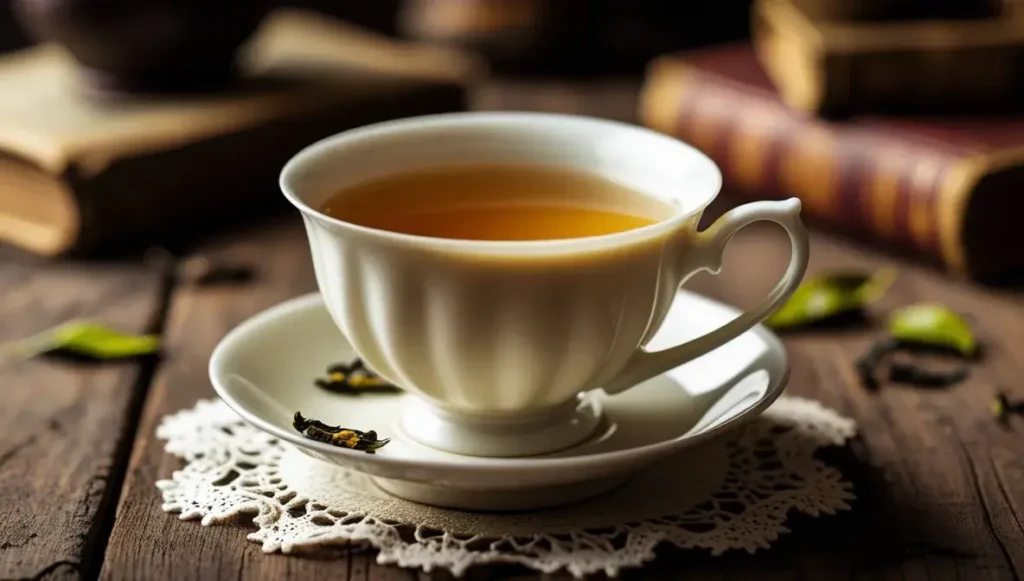
Understanding The Flavor Profiles
Darjeeling tea is known for its complex flavor, which can range from floral to fruity, with hints of muscatel. Understanding these nuances is key to knowing how milk will affect the overall taste. Milk can either complement or mask these flavors, depending on the type and amount used. It’s a bit of an experiment, really, to see what works best for your palate.
Pairing Darjeeling Tea With Complementary Flavors
When adding milk to Darjeeling, think about flavors that won’t clash.
- Consider using whole milk for a richer taste.
- Try almond milk for a nutty undertone.
- Oat milk can add a creamy texture without overpowering the tea.
Experimenting with different types of milk can significantly alter the tea’s flavor profile. It’s all about finding the right balance to enhance, not overwhelm, the Darjeeling’s natural characteristics.
Exploring Different Flushes For Milk Pairing
Darjeeling tea has different flushes, or harvest seasons, each with its own unique characteristics. First flush teas are typically lighter and more floral, while second flush teas are bolder and more muscatel-like. The flush you choose will influence how well it pairs with milk. A robust second flush might stand up better to milk than a delicate first flush. It’s worth trying different flushes to see which you prefer with milk.
Health Benefits Of Darjeeling Tea With Milk
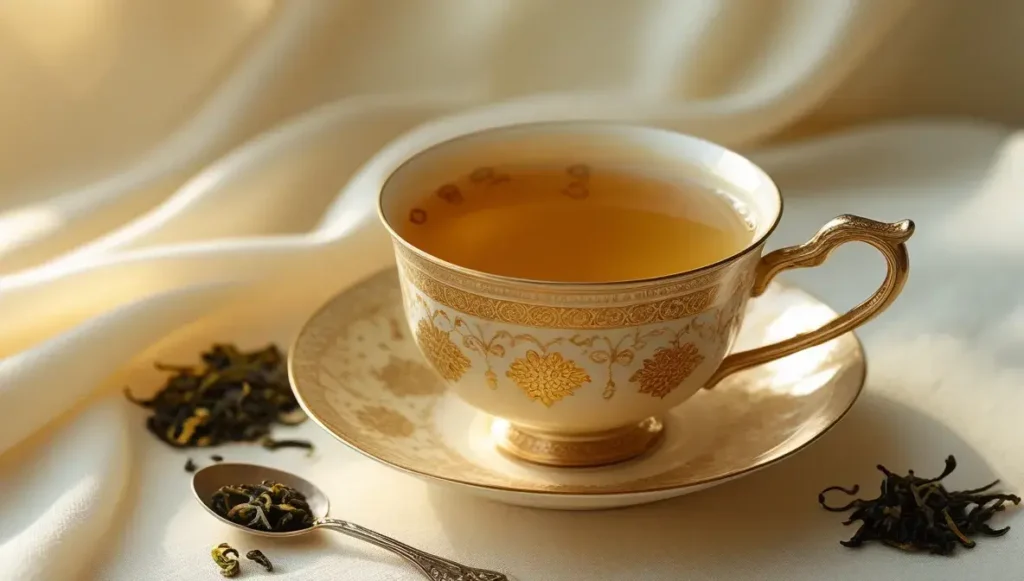
How Does Darjeeling Tea Compare To Other Teas In Terms Of Health Benefits?
When you stack darjeeling milk tea benefits against other teas like green or black tea, it holds its own pretty well. Darjeeling has a good amount of polyphenols, which are antioxidants. These are similar to what you find in green tea, and often more than in your average black tea.
Here’s a quick rundown:
- Polyphenols: Good levels, like green tea.
- Flavonoids: Helps keep your heart happy.
- Caffeine: Less than black tea, so it gives you a gentle lift.
- Digestion: Easy on the stomach.
- Relaxation: Calming without too much caffeine.
Darjeeling is a solid choice if you want a tea that tastes good and is good for you. It’s a nice middle ground between the intensity of some teas and the lightness of others.
Can Darjeeling Tea Aid In Weight Loss?
Yeah, it might help a bit. Darjeeling tea has stuff in it that could give your weight loss efforts a little boost. It’s not a magic bullet, but it can be a helpful addition to a healthy lifestyle. The caffeine and catechins in Darjeeling can speed up your metabolism, helping you burn more calories.
Here’s how it works:
- It can boost your metabolism.
- It might help you feel less hungry.
- It helps you stay hydrated, which is important for weight loss.
Is There Any Caffeine In Darjeeling Tea?
Yes, there is caffeine in Darjeeling tea, but it’s usually less than what you’d find in a regular cup of black tea or coffee. It’s enough to give you a little energy boost without making you feel jittery. The caffeine content can vary depending on how the tea is brewed and the specific flush (harvest season). Generally, you can expect a moderate amount of caffeine, making it a good choice for an afternoon pick-me-up without keeping you up all night.
Here’s a simple comparison:
| Type of Drink | Caffeine (approx.) |
|---|---|
| Darjeeling Tea | 40-70mg |
| Black Tea | 60-90mg |
| Coffee | 95-200mg |
👉 Elevate Mornings With Exclusive Premium Darjeeling Tea Blend Now 👈
Selecting Quality Darjeeling Tea For Milk
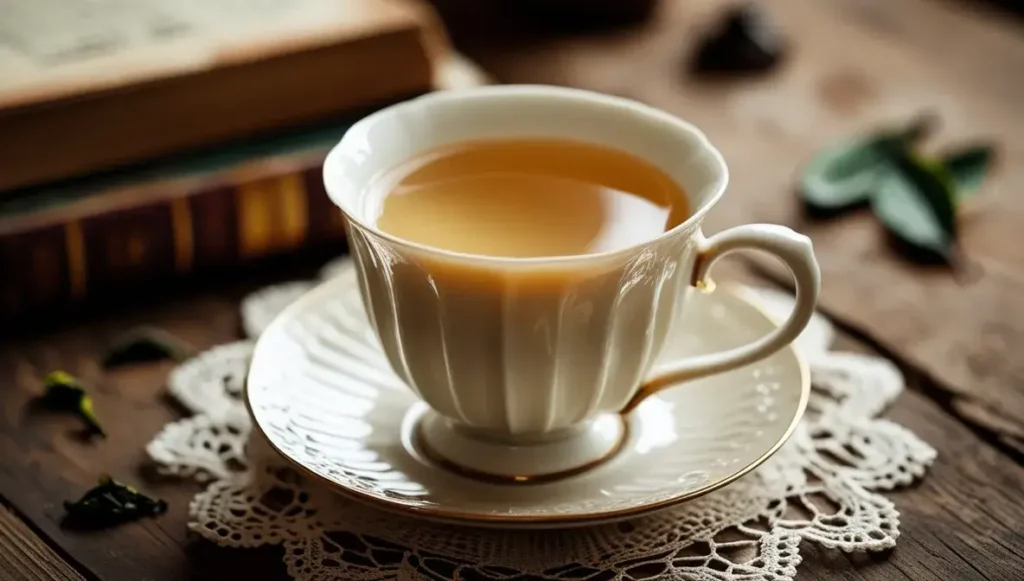
What Does FTGFOP Stand For?
Okay, so you’re looking at a bag of Darjeeling and see “FTGFOP” plastered on the label. What’s the deal? It stands for “Finest Tippy Golden Flowery Orange Pekoe.” Basically, it’s a grading system for tea, indicating a high quality. It means the tea has a lot of ‘tips’ (the new buds), is golden in color, flowery in aroma, and made from specific leaves. It doesn’t guarantee it’s the best tea for milk, but it’s a good start.
How Can I Ensure The Tea Is Authentic?
Darjeeling is like the champagne of teas, and just like champagne, there are fakes out there. Here’s how to spot the real deal:
- Look for certification: Check for the Darjeeling logo, which indicates it’s certified by the Tea Board of India.
- Buy from reputable sources: Stick to well-known tea shops or online retailers with good reviews.
- Check the origin: Make sure it clearly states “Darjeeling” and ideally specifies the garden or estate.
Be wary of teas that are suspiciously cheap. Authentic Darjeeling isn’t the cheapest tea on the shelf, so if the price seems too good to be true, it probably is.
Why Is Freshness Important In Tea?
Freshness is key when it comes to tea, especially Darjeeling. Tea, like any other natural product, loses its flavor and aroma over time. Stale tea will taste dull and lifeless, no matter how much milk you add. Here’s why it matters:
- Flavor: Fresh tea has a brighter, more vibrant flavor profile.
- Aroma: The aroma is a big part of the experience, and it fades with age.
- Health benefits: Some of the beneficial compounds in tea degrade over time.
To ensure freshness, check the packaging for a “best by” or “harvest” date. Store your tea in an airtight container away from light, heat, and moisture. Considering the best milk for darjeeling is important, but it won’t matter if the tea is old.
Ideal Moments For Darjeeling Tea With Milk
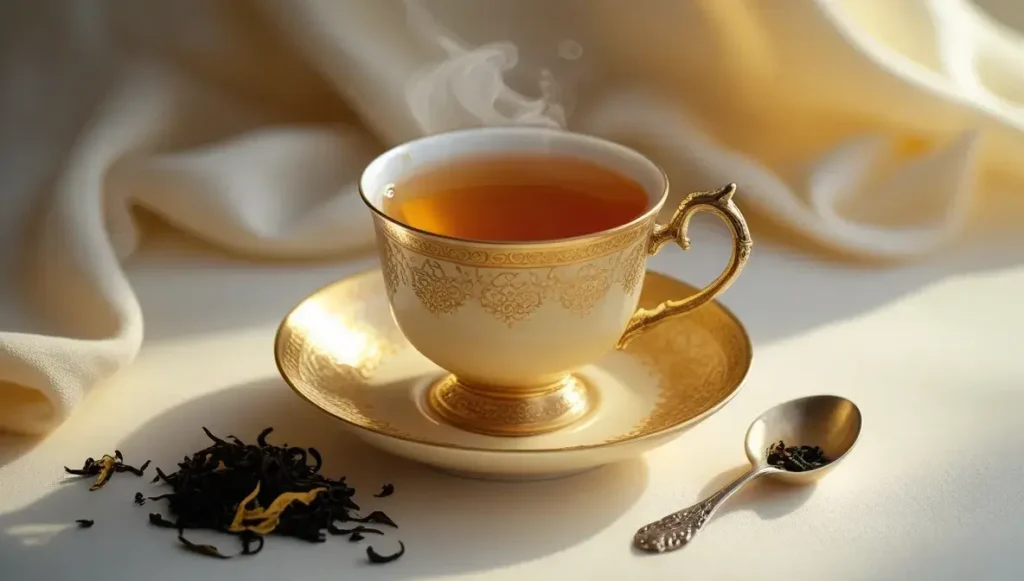
Is Darjeeling Tea Suitable For Breakfast?
Darjeeling tea with milk can be a great way to start the day. It offers a gentler caffeine kick compared to coffee, which can be ideal if you’re sensitive to stronger stimulants. First flush Darjeeling, known for its lighter body and floral notes, pairs well with milk in the morning. It’s a refreshing alternative to traditional breakfast beverages.
- Provides a mild energy boost.
- Offers a sophisticated flavor profile.
- Can be a comforting morning ritual.
Starting your day with Darjeeling tea and milk can set a calm and focused tone. It’s a small luxury that can make a big difference in your morning routine.
What Are The Benefits Of Afternoon Tea With Darjeeling?
Afternoon tea is a classic tradition, and Darjeeling tea with milk fits right in. The tea’s nuanced flavors complement the light snacks and pastries often served during afternoon tea. It’s a chance to pause, relax, and enjoy a moment of elegance. Darjeeling’s unique character makes it a standout choice for this occasion.
- Enhances the afternoon tea experience.
- Provides a gentle pick-me-up.
- Pairs well with a variety of treats.
Can I Drink Darjeeling Tea Before Bed?
Whether or not you can drink Darjeeling tea with milk before bed depends on your caffeine sensitivity. While Darjeeling generally has less caffeine than coffee, it still contains some. If you’re sensitive, it might disrupt your sleep. However, if you tolerate caffeine well, a cup of second flush Darjeeling with milk could be a soothing way to wind down.
- Consider your caffeine tolerance.
- Opt for a weaker brew if needed.
- Enjoy the calming ritual of tea before bed.
👉 Try The Ultimate Fresh Darjeeling Tea Experience Today Now 👈
Food Pairings For Darjeeling Tea With Milk
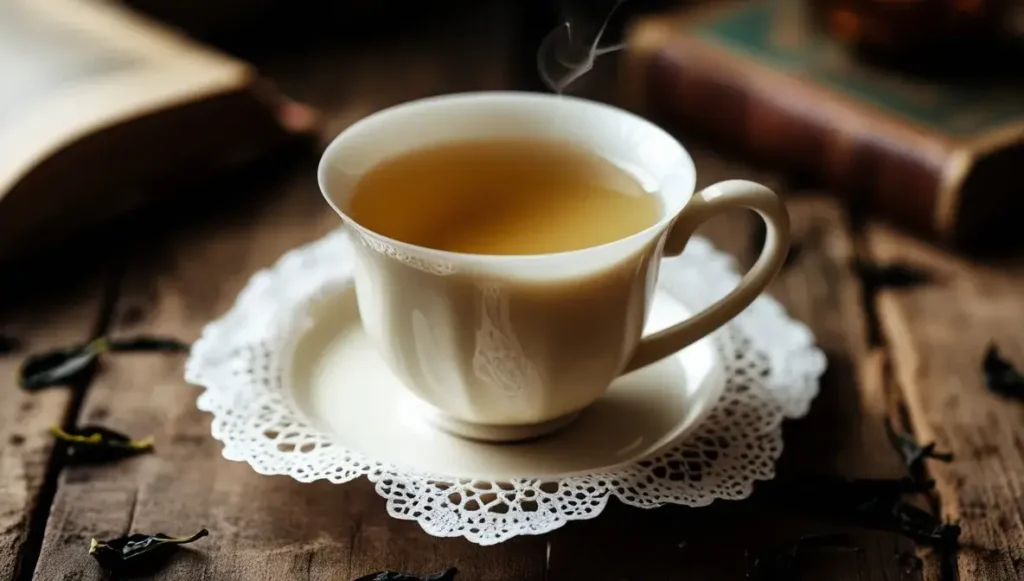
What Are Some Light Snacks That Go Well With Darjeeling Tea?
When thinking about snacks to enjoy with Darjeeling tea, especially with milk pairing for darjeeling, you want to choose items that won’t overpower the tea’s delicate flavor. Opt for light and subtly flavored snacks.
- Cucumber sandwiches (crusts off, naturally).
- Scones with clotted cream and a light fruit preserve.
- Plain biscuits or shortbread.
The goal is to complement, not compete. Think of it as a supporting role, not a starring one. You want the tea to shine, and the snacks to simply enhance the experience.
Can I Pair Darjeeling Tea With Desserts?
Yes, you can absolutely pair Darjeeling tea with desserts! The key is to select desserts that are not overly rich or intensely flavored.
- Fruit tarts are a great choice, offering a balance of sweetness and acidity.
- Macarons, especially those with subtle flavors like vanilla or lemon, work well.
- Light sponge cakes or madeleines can also be a delightful accompaniment.
What Regional Foods Enhance The Darjeeling Tea Experience?
To really elevate your Darjeeling tea experience, consider pairing it with regional foods that complement its unique character. This is where you can get a little more adventurous and explore flavors that resonate with the tea’s origin.
- Darjeeling Momos: These steamed dumplings, filled with vegetables or lightly spiced meat, are a natural fit.
- Bengali Cucumber Kachumber: A refreshing salad with cucumber, onions, and a touch of lime.
- Paneer Tikka: Grilled cottage cheese cubes marinated in mild spices.
Conclusion
So, we’ve talked a lot about Darjeeling tea, right? It’s pretty clear that adding milk, or even sugar, can really change its special taste. This tea is known for its delicate flavors, and sometimes, adding stuff just covers that up. But hey, everyone likes what they like! If you’re someone who enjoys a bit of milk in your tea, go for it.
Just know that you might be missing out on some of the tea’s natural goodness. The main thing is to enjoy your tea however you like it. So, next time you brew a cup of Darjeeling, think about what you’re adding and why. Maybe try it plain first, just to see. You might be surprised by how good it is all by itself.
👉 Secure Your Exclusive Limited-Edition Darjeeling Tea Collection Today Now 👈
Frequently Asked Questions
Is it common to add milk to Darjeeling tea?
Adding milk to Darjeeling tea isn’t a common practice, especially among tea experts. Darjeeling tea has a delicate taste with many different flavors. Adding milk can hide these flavors and make the tea taste less special. It’s like turning down the music on a beautiful song.
How does sugar affect the taste of Darjeeling tea?
Adding sugar will make Darjeeling tea sweeter, but it can also hide the tea’s natural sweetness and flowery smells. Sugar can turn the tea’s complex taste into just a sugary drink. If you want to try something different, a tiny bit of honey might work better because it can add to the tea’s flavors instead of covering them up.
What are the traditional ways of serving Darjeeling tea?
Traditionally, Darjeeling tea is served plain, without milk or sugar. It’s best brewed at about 185°F to 194°F for 3-4 minutes. Using filtered water helps keep the tea’s true flavors.
How does Darjeeling tea compare to other teas in terms of health benefits?
Darjeeling tea is packed with good stuff like antioxidants, which help protect your body. It’s also known for being gentle on your stomach. Compared to many other teas, Darjeeling is often praised for its unique blend of health benefits and amazing taste.
Can Darjeeling tea aid in weight loss?
Yes, Darjeeling tea can help with weight loss. It has compounds that can boost your body’s ability to burn fat. Drinking it regularly as part of a healthy diet and active lifestyle can support your weight management goals.
Is there any caffeine in Darjeeling tea?
Yes, Darjeeling tea does have caffeine. The amount can change based on things like how it’s processed and how long you steep it. Generally, it has less caffeine than coffee but enough to give you a gentle energy boost without making you feel jittery.
